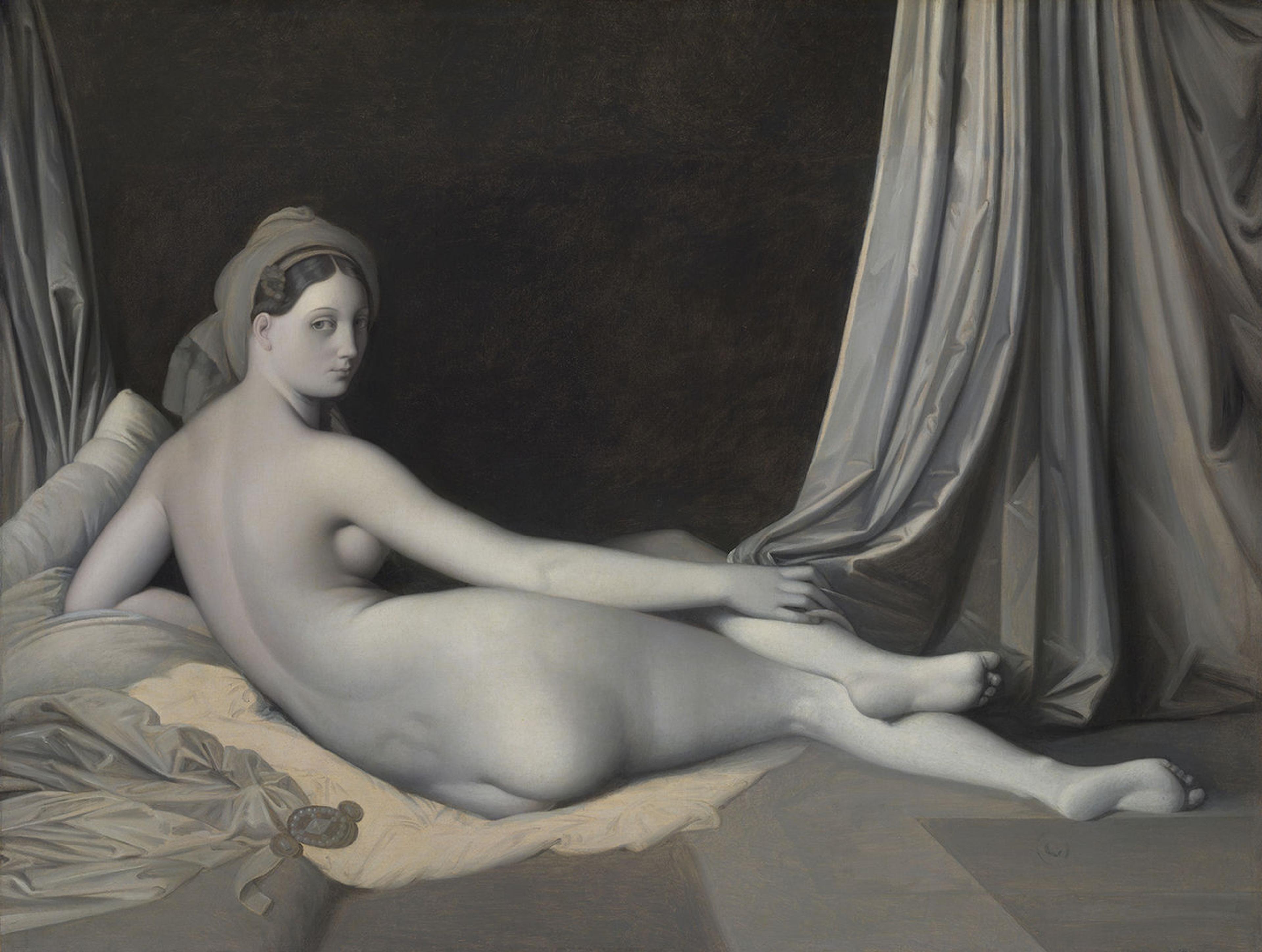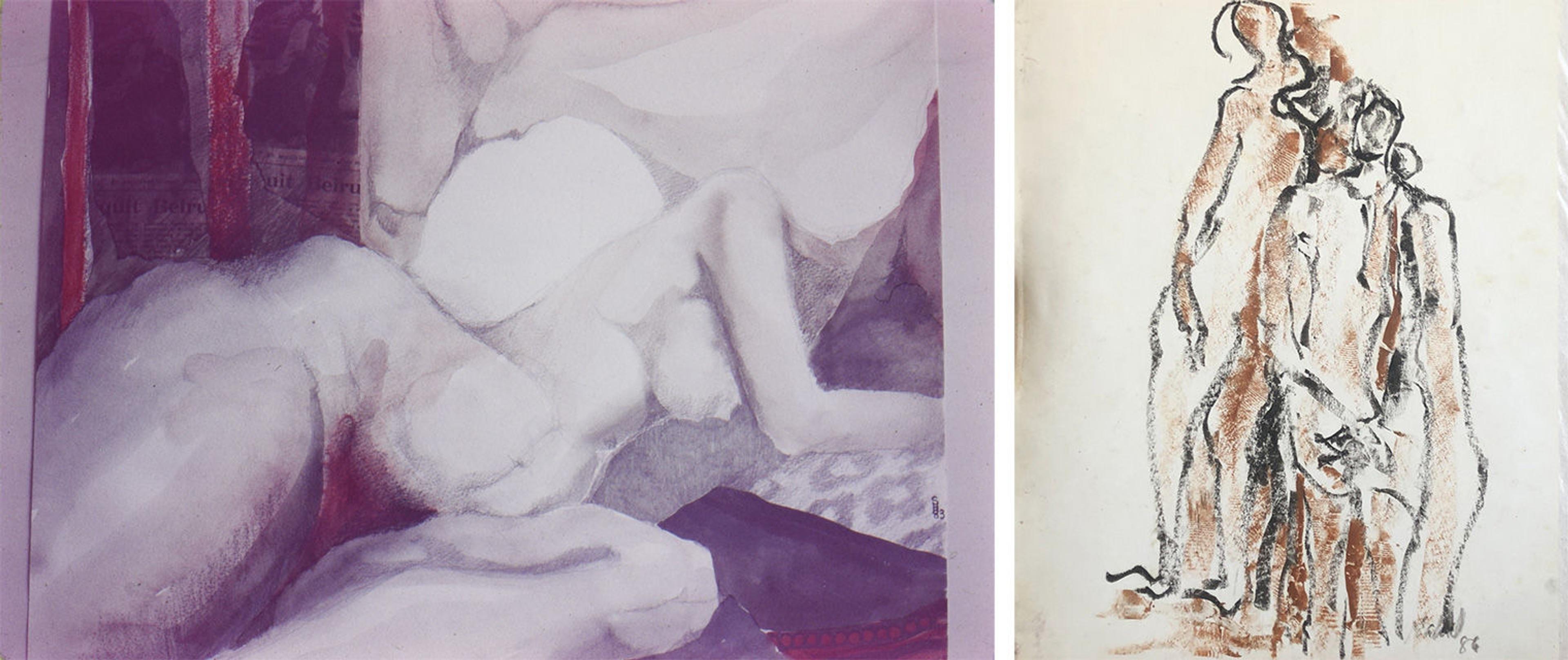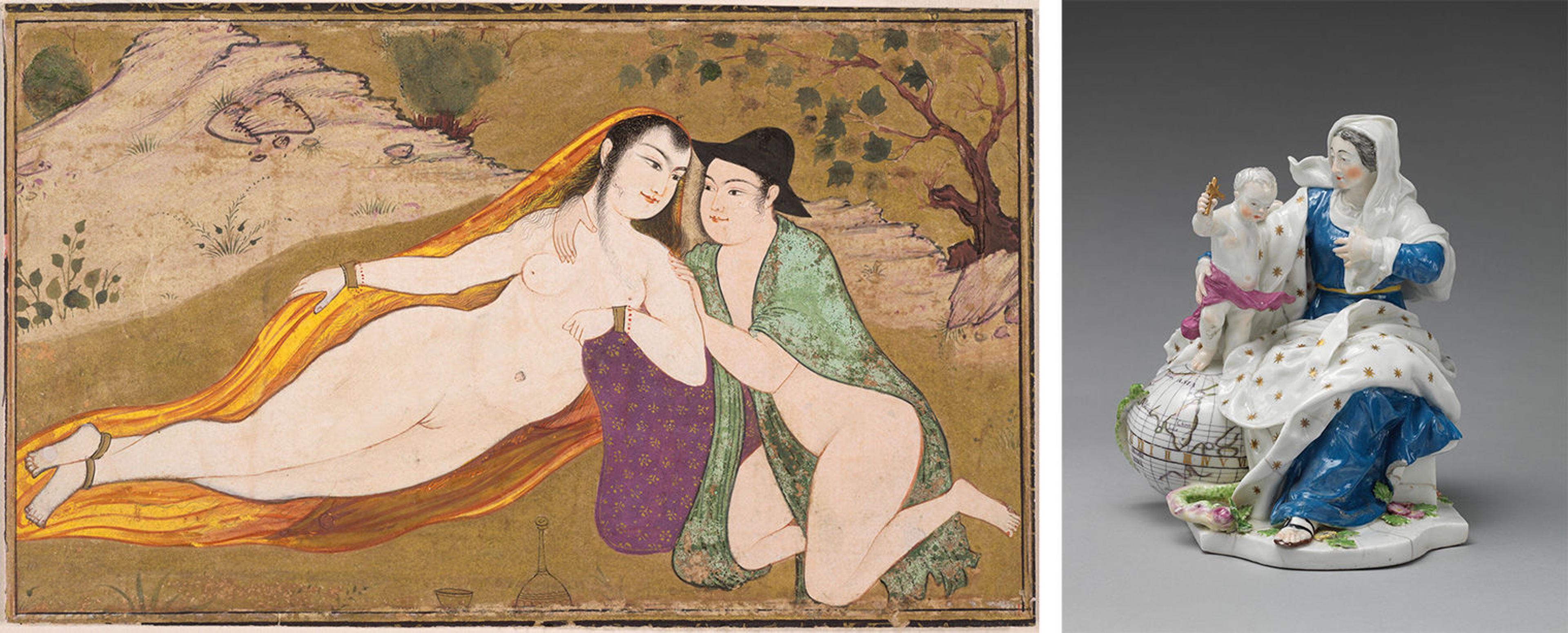During the COVID-19 pandemic, women around the globe were shouldered with increased household labor and care work while the gender wage gap widened. In 2022, the United States Supreme Court stripped women of the right to abortion, a medical procedure essential to ensuring positive women’s health outcomes. The same year, after the death of Mahsa Amini while in the custody of Iran’s morality police (charged with improperly wearing her hijab), unprecedented protests for women’s freedom not only asserted women’s right to exist in public space however they choose to clothe their bodies, but challenged the very legitimacy of the Iranian state. Across the world, women have refused to accept these new laws and social norms that deny their human rights. In celebration of International Women’s Day on March 8, this article examines the role of global feminist visual culture in resisting these forces, focusing particularly on the 1980s, a similar period during which women’s rights around the world were rolled back.
The first International Women’s Day was celebrated in 1910 when Clara Zetkin, a Marxist theorist active in Germany’s Social Democratic Party, coordinated with trade union and socialist groups in several different countries to commemorate a March 8, 1857, strike by female textile workers in New York City. (At the time it was believed to be the first strike organized by and for women, though historians are now skeptical that the action occurred.) International Women’s Day commemorated women’s trade union organizing and focused attention on the ongoing labor exploitation and gendered oppression women face in both the workplace and the home. In 1987, the National Women’s History Project petitioned the United States Congress to dedicate the entire month of March to the political, economic, and social contributions of women, establishing Women’s History Month.
Examining the visual culture of this period of the 1980s, a decade of stalled progress toward the justice and equality fought for in the 1960s and '70s, can reveal how women understood and represented these challenges, organized resistance, and struggled to overcome them. Two posters created by women artists more than seven thousand miles apart engaged those questions: Lala Rukh’s Masaawi Haqooq (1983–4) in Lahore, Pakistan, and Guerrilla Girls’s Do Women Have To Be Naked To Get Into the Met. Museum? (1989) in New York.

Lala Rukh (Pakistani, 1948–2017). Masaawi Haqooq, 1983–84. Silk screen print, 28 1/8 x 19 1/4 in. (68.6 x 48.3 cm). The Metropolitan Museum of Art, New York, Gift of the Estate of Lala Rukh, 2019, (2019.403.3)
Masaawi Haqooq, Urdu for “equal rights,” is a statement of resistance against the new legal codes implemented by Pakistan’s military dictatorship under General Zia ul Haq (1977–88) that restricted women’s access to public space. The image is set against a white backdrop. A female figure in black takes up most of the picture plane, while floating above her in the upper right-hand corner is red text that reads “masaawi haqooq” in Urdu script, providing a stark contrast with both the figure in black and the white background. The figure in the image towers over us. When we look at her, we are looking up to meet her eyes, and yet she is turned slightly away from the viewer in three-quarter profile. The figure wears a burqa, which was not a style of dress common in Pakistan before the military dictatorship but introduced after the coup to reflect the more conservative Salafi influence Zia injected into his remaking of religious practice in Pakistan.
In 1979, General Zia ul Haq staged a coup of democratically elected Pakistani Prime Minister Zulfikar Ali Bhutto, ushering in a new era of Pakistani politics. Soon after the coup, the newly established military dictatorship began implementing new laws and policies aimed at reshaping Pakistan’s penal code to conform to Salafi dictates for political Islam. Among the new laws and policies were the 1979 Hudood Ordinances, which criminalized all extramarital sexual activity, effectively decriminalizing sexual violence against women. The Zia Dictatorship was supported and sustained by military aid from the United States during the Reagan Administration, as Pakistan was important to US strategic interests in the context of the Cold War. It was in this multifaceted global context that Lala Rukh began teaching at the National College of Arts, Pakistan’s premier public art college, in 1980, soon after earning her MFA from the University of Chicago in 1976.
Lala Rukh and her comrades organized the Women’s Action Forum (WAF) Lahore chapter to, in her words, “get together and discuss what the hell was going on.”
After the Hudood Ordinances were enacted, women began facing criminal charges of adultery for reporting sexual assault. Lala Rukh and her comrades organized the Women’s Action Forum (WAF) Lahore chapter to, in her words, “get together and discuss what the hell was going on.” While WAF initially drafted pamphlets to circulate, that strategy soon became too risky for those involved, given state repression of dissent. Instead, Lala Rukh began designing and screen-printing posters to disseminate information about the feminist movement against the dictatorship. Her home in Lahore became a space where women gathered to organize, find affinity with one another, and design and create posters that spread WAF’s message.

Sadequain (Pakistani [born India], 1930–1987). Seascape with Three Boats, 20th century. Oil on wood, 22 1/2 x 32 in. (57.2 x 81.3 cm). The Metropolitan Museum of Art, New York, Gift of the Government of Pakistan, 1980 (2016.12) © SADEQUAIN Foundation USA
The use of text in Masaawi Haqooq is notable. Zia-era dictates for art prioritized both calligraphy and landscape painting, forms that were deemed more appropriate under the conservative religious interpretations of the ruling class. Therefore, on first glance, one might think that the inclusion of text is an acquiescence to the popularity of calligraphy in this period, subverting in content what it couldn’t in form. Many view the Zia period as a time where calligraphy experienced rapid stylistic development as a result of state patronage. Seascape with Three Boats (twentieth century) by the artist Sadequain, for example, was given to The Met by the Pakistani state during the military dictatorship. Sadequain, for his reliance on calligraphy as a primary format, enjoyed the patronage of Zia and his government—though at times he used the form toward more politically subversive ends. In Lala Rukh’s assessment, however, calligraphy was emptied of any potential subversiveness because it was given so much attention and resources by the state. Lala Rukh nonetheless took the study of calligraphy seriously and trained under a renowned ustaad, but she felt that for political reasons, this moment warranted a break with the calligraphic tradition. For this reason, it seems unlikely that Lala Rukh’s use of text in the composition is a contribution to the local tradition of calligraphy, even if employed to subvert it. The 1980s were the last decade of the Cold War and a period of disillusionment in both the Global North and South. While right-wing politics in Islamic states reshaped once- democratic states, the Global North also grew more conservative. In the U.S., for example, the vibrant feminist movement and the gains it had made during the 1970s engendered a right-wing backlash by the 1980s, when progress toward formalizing women’s legal rights began to stall. The Equal Rights Amendment, proposed by suffragette Alice Paul in 1923 and passed by the U.S. House of Representatives and the Senate in 1972, had a deadline of June 1982 for ratification by thirty-eight of fifty U.S. states. By this 1982 deadline, only thirty-five had ratified the proposed nineteenth amendment, and though it’s been reintroduced in every session of Congress since, the United States has yet to ensure the equal rights of women under the law. The 1980s also marked the start of the right-wing movement in the United States against the Supreme Court decision in Roe v. Wade (1973), which legalized women’s access to abortion as a medical procedure. One might see the 1980s then, as a period of global right-wing backlash against the optimism of movements for liberation of all kinds that had proliferated around the world throughout the 1970s.

Guerrilla Girls (American, established 1985). Do Women Have To Be Naked To Get Into the Met. Museum?, 1989. Lithograph, 11 x 28 in. (27.9 x 71.1 cm). The Metropolitan Museum of Art, New York, Gift of Scott, Lauren and Lily Nussbaum, 2021 (2021.70). © Guerrilla Girls
The Guerrilla Girls’s Do Women Have To Be Naked To Get Into the Met. Museum? makes similar use of text as Masaawi Haqooq. The text in the poster reads, “Less than 5% of the artists in the Modern Art Sections are women, but 85% of the nudes are female.” The Guerrilla Girls, formed in New York City in 1985, are a collective of anonymous artists who are known for deploying the strong graphic quality of advertisements and the visual language of political posters for their feminist praxis. They disguise their identity by donning gorilla masks and dressing in black. This strategy is a common tactic among anti-authoritarian groups to form a communal identity, blurring the lines between the individual and the group. They show their work both in public, through posters, banners, actions and other means, as well as in museums and galleries.
This strategic use of text in Do Women Have To Be Naked To Get Into the Met. Museum? reinforces the message of the image by supplementing the visuals with carefully chosen words. In the poster, we see the figure of a woman from Jean-Auguste-Dominique Ingres’s La Grande Odalesque (1814), but with her face covered by a gorilla mask. In the Guerrilla Girls poster, Ingres’s Odalisque reclines in the left side of the image, looking directly at the text that reads, “Do women have to be naked to get into the Met. Museum?” The unwritten answer appears to be yes, especially since the figure on the poster is herself nude.

Visitors may currently view Ingres’s depiction of ideal female beauty at The Met. Jean Auguste Dominique Ingres (French, 1780–1867). Odalisque in Grisaille, ca. 1824–34. Oil on canvas, 32 3/4 x 43 in. (83.2 x 109.2 cm). The Metropolitan Museum of Art, New York, Catharine Lorillard Wolfe Collection, Wolfe Fund, 1938 (38.65)
The visuals and text together instruct the viewer that women are not recognized or equally compensated for their labor as artists, yet they are suitable as the subject of works of art if satisfying the male gaze. That The Met now has this poster in its collection presents an interesting tension. It is an addition of female artists to The Met’s collection, just as the poster calls for—but it is also the addition of yet another nude, indicating that the depiction of the female form remains an essential subject matter for artists who want to make their mark in the fine arts, even when used to subvert or challenge the tradition.
In both posters, the female body features prominently as central to the poster’s aesthetic and social meaning. While Lala Rukh’s figure is fully clothed in loose-fitting fabric that reveals only the face of the figure and little of her bodily form, the Guerrilla Girls’s figure is nude except for her face, which is covered by the gorilla mask. Yet, it would be a misinterpretation to attribute Lala Rukh’s portrayal of the female body clad in a burqa as simply an inheritance from the Islamic world, where women are stereotypically portrayed as covered and the male gaze has been reduced to veiling. Not only was the style of dress depicted in the poster newly introduced to Pakistan by Zia in the late 1970s, but as part of the broader artistic movement against the military dictatorship of Zia ul Haq, Pakistani feminist artists during this period often painted female nudes as well as clothed female figures. Salima Hashmi, in Morning Paper (1983), uses the same colors to portray the pubis of her reclining nude figure to then paint over newspaper clippings detailing police violence against women. The nude woman depicted in the work below from Nahid Raza’s Woman Series (1986) dances to music, despite dancing being forbidden in Zia-era Pakistan. For these feminist artists, confronting the viewer with the very body that the state sought to render invisible was a form of asserting women’s agency.

Left: Salima Hashmi (Pakistani [born India], b. 1942). Morning Paper, 1983. Mixed media on paper, 15 x 18 in. (38.1 × 45.72 cm). Collection of the artist © Salima Hashmi. Right: Nahid Raza (Pakistani, b. 1947). Woman Series, 1986. Drawing on paper, 12 x 10 in. (30.5 x 25.4 cm). Collection of the artist © Nahid Raza
Across the art-historical traditions of different cultures and time periods, women’s bodies have been employed, both nude and veiled, to satisfy patriarchal expectations. Evident in the examples below, the nude has been an important subject matter all over the world, not just in Europe, while the depiction of the veiled female form was just as commonly represented in Europe to depict feminine piety and purity. Depictions of female nudes in Safavid Iran expressed religious feeling as well as physical desire, stoking the lust of male courtly viewers. In early modern and Victorian England, the veiled Madonna was a regular artistic subject, reflecting an emphasis on the purity of women. During this period, marked by colonization and the reach of the East and West India Companies, these social mores were also exported across the empire.

Left: Muhammad Qasim (Persian, 17th century). Lovers' Dalliance, mid-17th century. Opaque watercolor and gold on paper, 5 1/8 x 8 1/2 in. (13 x 21.5 cm). Harvard Art Museums/Arthur M. Sackler Museum, Grace Nichols Strong, Francis H. Burr and Friends of the Fogg Art Museum Funds, 1950 (1950.130). Right: Chelsea Porcelain Manufactory (British, 1745–1784). Virgin and Child, ca. 1755. Soft-paste porcelain, H. 8 1/4 in. (21 cm). The Metropolitan Museum of Art, New York, Bequest of Irwin Untermyer, 1973 (1974.28.139)
Though Lala Rukh renders the literal shackles that bind her figure, in both images the women are effectively shackled, whether they are portrayed nude or in a burqa. Both bodies in these works are made to conform to modern representations of the ideal feminine body in their respective social contexts. Women—their rights, their aspirations, and fair compensation for their labor—are in both images reduced to the symbol of the body as a bearer of the social conditions that cause gendered inequality.
While modern wage labor and global working conditions have necessitated transforming all bodies and minds in order to better produce labor power, the female body, in particular, holds a unique and subordinate role in the sexual division of labor. Women’s bodies are not only mechanized to labor for wages but also transformed into sexual objects and machines of reproduction to serve the role of unpaid emotional, domestic, and caregiving labor. The imperatives of the labor market, as well as the family, structure women’s relationship to their bodies, but so does the modern state, which creates a legal framework restricting the body of the female citizen, transforming her into a commodity, sexual object, and machine for reproduction of labor power.

Édouard Manet (French, 1832–1883). Olympia, 1863. Oil on canvas, 51 3/8 x 75 1/4 in. (130.5 x 191 cm). Musée d'Orsay, Paris, France, 1890 (RF 644). Photo: Patrice Schmidt © RMN-Grand Palais / Art Resource, NY
By way of example, Édouard Manet’s Olympia (1863) shows how artists have grappled with the commodification of the female body in capitalist modernity. Manet levied the nude to analyze transformations to the class structures of modern Europe and locate the exploitation and oppression of women within those structures. The woman, depicted nude in this image, was, to the viewer of the time, visibly working class and likely selling her body. This image showed the viewer that capitalism in late-nineteenth-century Paris had progressed to a point where the body had finally become a perfect and complete commodity with its own exchange value. The nude figure represented the “new” prostitute who does not engage in the illusion of seduction, but instead sells her body to anyone who can pay. The maid, depicted on the right side of the image, also represents a quintessentially modern labor relation. She is a waged laborer of African descent, a reference to France’s colonial empire, which enslaved and exploited the labor of Black women. Interestingly, early sketches of this painting show that Manet initially thought to represent the maid as white, but later hired Laure, who migrated to Paris to work as a nursemaid from either Africa or the Caribbean, to model. Whether we focus on the woman in the foreground, whose body has been transformed into a commodity, or the woman in the background, a free subject traversing the French Empire who sells her labor power for wages, this image is inextricable from hierarchies of gender, class, and empire.
The Guerrilla Girls’s Do Women Have To Be Naked To Get Into the Met. Museum? reveals the gendered transformation of the female body at work over a century later. While female artist-workers continue to face issues of representation, discrimination, and inequality in earnings compared to male artists, representing women’s bodily form becomes a vehicle through which male artists garner acclaim. The poster reveals the dynamics of gendered labor in which women have long been defined: not by their genius, but by their bodies. Lala Rukh’s figure in Masaawi Haqooq, is similarly defined by her body, concealed by the military dictatorship that has stripped her of the legal rights her mother and grandmother’s generations fought hard to win. She clenches her fist in the foreground of the image while displaying the shackles on her wrists. While the Guerrilla Girls provide us with an analysis of the nature of the problem, Lala Rukh expresses both defiance and hope that the red text in the upper righthand corner of the image—“masaawi haqooq,” or equal rights—along with the reclamation of ownership over the body and the promise of new egalitarian ways of organizing society, will be realized for women.
